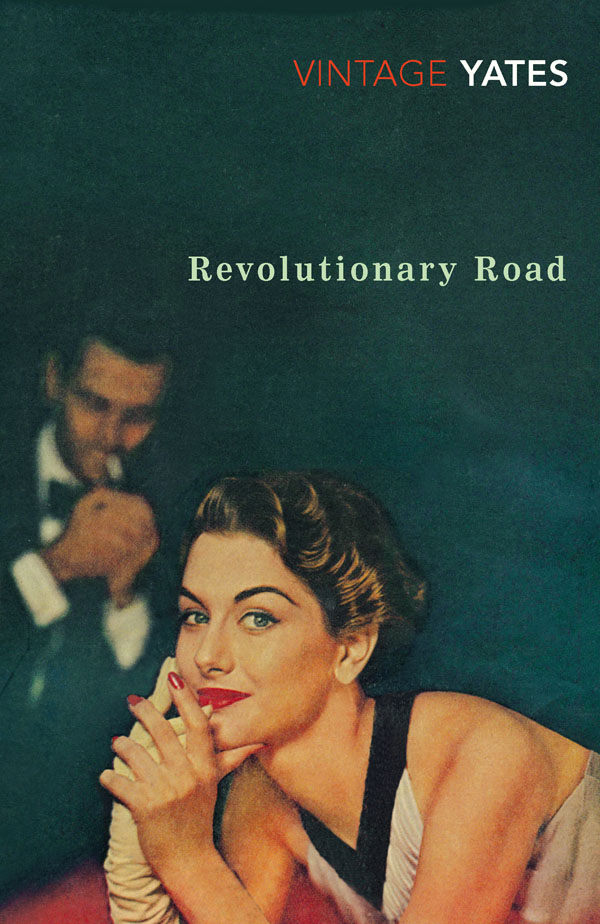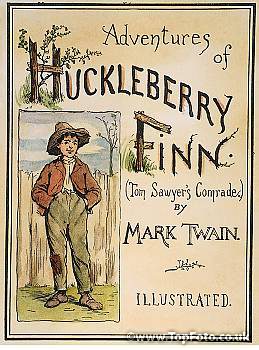Author Photo And Bio
 1. Persuasion by Jane Austen (1817). Eight years ago, Anne Elliot was persuaded by a friend to break off her engagement to a handsome naval officer because he lacked wealth and name. Now twenty-seven, her romantic prospects a dim memory, she encounters him once again, only now he is a grand success. Can she rekindle his love?
1. Persuasion by Jane Austen (1817). Eight years ago, Anne Elliot was persuaded by a friend to break off her engagement to a handsome naval officer because he lacked wealth and name. Now twenty-seven, her romantic prospects a dim memory, she encounters him once again, only now he is a grand success. Can she rekindle his love?
 2. Alice’s Adventures in Wonderland by Lewis Carroll (1865). Young Alice follows a worried, hurrying White Rabbit into a topsy-turvy world, where comestibles make you grow and shrink, and flamingoes are used as croquet mallets. There she meets many now-beloved characters, such as the Mad Hatter, the Cheshire Cat, and the Queen of Hearts, in this linguistically playful tale that takes a child’s-eye view of the absurdities of adult manners.
2. Alice’s Adventures in Wonderland by Lewis Carroll (1865). Young Alice follows a worried, hurrying White Rabbit into a topsy-turvy world, where comestibles make you grow and shrink, and flamingoes are used as croquet mallets. There she meets many now-beloved characters, such as the Mad Hatter, the Cheshire Cat, and the Queen of Hearts, in this linguistically playful tale that takes a child’s-eye view of the absurdities of adult manners.
 3. Pride and Prejudice by Jane Austen (1813). “It is a truth universally acknowledged, that a single man in possession of a good fortune must be in want of a wife,” reads this novel’s famous opening line. This matching of wife to single man —or good fortune —makes up the plot of perhaps the happiest, smartest romance ever written. Austen’s genius was to make Elizabeth Bennet a reluctant, sometimes crabby equal to her Mr. Darcy, making Pride and Prejudice as much a battle of wits as it is a love story.
3. Pride and Prejudice by Jane Austen (1813). “It is a truth universally acknowledged, that a single man in possession of a good fortune must be in want of a wife,” reads this novel’s famous opening line. This matching of wife to single man —or good fortune —makes up the plot of perhaps the happiest, smartest romance ever written. Austen’s genius was to make Elizabeth Bennet a reluctant, sometimes crabby equal to her Mr. Darcy, making Pride and Prejudice as much a battle of wits as it is a love story.
 4. Middlemarch by George Eliot (1871–72). Dorothea Brooke is a pretty young idealist whose desire to improve the world leads her to marry the crusty pedant Casaubon. This mistake takes her down a circuitous and painful path in search of happiness. The novel, which explores society’s brakes on women and deteriorating rural life, is as much a chronicle of the English town of Middlemarch as it is the portrait of a lady. Eliot excels at parsing moments of moral crisis so that we feel a character’s anguish and resolve. Her intelligent sympathy for even the most unlikable people redirects our own moral compass toward charity rather than enmity.
4. Middlemarch by George Eliot (1871–72). Dorothea Brooke is a pretty young idealist whose desire to improve the world leads her to marry the crusty pedant Casaubon. This mistake takes her down a circuitous and painful path in search of happiness. The novel, which explores society’s brakes on women and deteriorating rural life, is as much a chronicle of the English town of Middlemarch as it is the portrait of a lady. Eliot excels at parsing moments of moral crisis so that we feel a character’s anguish and resolve. Her intelligent sympathy for even the most unlikable people redirects our own moral compass toward charity rather than enmity.
 5. The Portrait of a Lady by Henry James (1881). James’s Portrait is of that superior creature Isabel Archer, an assured American girl who is determined to forge her destiny in the drawing rooms of Europe. To this end, she weds the older and more cultivated Gilbert Osmond, and eventually finds that she is less the author of her fate than she thought. Throughout, James gives us a combination of careful psychological refraction and truly diabolical plotting. The result is a book at once chilling and glorious.
5. The Portrait of a Lady by Henry James (1881). James’s Portrait is of that superior creature Isabel Archer, an assured American girl who is determined to forge her destiny in the drawing rooms of Europe. To this end, she weds the older and more cultivated Gilbert Osmond, and eventually finds that she is less the author of her fate than she thought. Throughout, James gives us a combination of careful psychological refraction and truly diabolical plotting. The result is a book at once chilling and glorious.
 6. Slaughterhouse-Five by Kurt Vonnegut (1969). Part science fiction, part war story, this is the story of Billy Pilgrim, a former World War II prisoner of war who survived the firebombing of Dresden, as did Vonnegut himself. Abducted by visitors from the planet Trafalmadore, Pilgrim comes “unstuck in time” and is thus able to revisit key points in his life and even his future. Written at the height of the Vietnam War, this muscular satire reveals the absurdity and brutality of modern war.
6. Slaughterhouse-Five by Kurt Vonnegut (1969). Part science fiction, part war story, this is the story of Billy Pilgrim, a former World War II prisoner of war who survived the firebombing of Dresden, as did Vonnegut himself. Abducted by visitors from the planet Trafalmadore, Pilgrim comes “unstuck in time” and is thus able to revisit key points in his life and even his future. Written at the height of the Vietnam War, this muscular satire reveals the absurdity and brutality of modern war.
 7. Pricksongs & Descants by Robert Coover (1969). The story lies in the telling in this groundbreaking collection of metafictions. Through rich, playful language, Coover reimagines traditional tales, including Hansel and Gretel, Little Red Riding Hood, and the Virgin birth. In stories such as “The Elevator” and “The Babysitter,” he makes the familiar surprising, suggesting that there is always another (and another and another) way of looking at things.
7. Pricksongs & Descants by Robert Coover (1969). The story lies in the telling in this groundbreaking collection of metafictions. Through rich, playful language, Coover reimagines traditional tales, including Hansel and Gretel, Little Red Riding Hood, and the Virgin birth. In stories such as “The Elevator” and “The Babysitter,” he makes the familiar surprising, suggesting that there is always another (and another and another) way of looking at things.
 8. Revolutionary Road by Richard Yates (1961). Trying to avoid the conformity of their suburban neighbors on Revolutionary Road, Frank and April Wheeler talk of moving to France where Frank might write the great book or think the great thoughts April believes he is capable of. However, infidelity and alcohol abuse dissolve their dreams as Frank and April lose faith in each other and themselves in this exquisitely painful novel.
8. Revolutionary Road by Richard Yates (1961). Trying to avoid the conformity of their suburban neighbors on Revolutionary Road, Frank and April Wheeler talk of moving to France where Frank might write the great book or think the great thoughts April believes he is capable of. However, infidelity and alcohol abuse dissolve their dreams as Frank and April lose faith in each other and themselves in this exquisitely painful novel.
 9. Adventures of Huckleberry Finn by Mark Twain (1884). Hemingway proclaimed, “All modern American literature comes from . . . ‘Huckleberry Finn.’ ” But one can read it simply as a straightforward adventure story in which two comrades of conve nience, the parentally abused rascal Huck and fugitive slave Jim, escape the laws and conventions of society on a raft trip down the Mississippi. Alternatively, it’s a subversive satire in which Twain uses the only superficially naïve Huck to comment bitingly on the evils of racial bigotry, religious hypocrisy, and capitalist greed he observes in a host of other largely unsympathetic characters. Huck’s climactic decision to “light out for the Territory ahead of the rest” rather than submit to the starched standards of “civilization” reflects a uniquely American strain of individualism and nonconformity stretching from Daniel Boone to Easy Rider.
9. Adventures of Huckleberry Finn by Mark Twain (1884). Hemingway proclaimed, “All modern American literature comes from . . . ‘Huckleberry Finn.’ ” But one can read it simply as a straightforward adventure story in which two comrades of conve nience, the parentally abused rascal Huck and fugitive slave Jim, escape the laws and conventions of society on a raft trip down the Mississippi. Alternatively, it’s a subversive satire in which Twain uses the only superficially naïve Huck to comment bitingly on the evils of racial bigotry, religious hypocrisy, and capitalist greed he observes in a host of other largely unsympathetic characters. Huck’s climactic decision to “light out for the Territory ahead of the rest” rather than submit to the starched standards of “civilization” reflects a uniquely American strain of individualism and nonconformity stretching from Daniel Boone to Easy Rider.
 10. The Railway Children by E. Nesbit (1906). This hopeful and heartbreaking tale begins when the father of three children is taken away one night by the authorities. Their resourceful mother tells them they must leave London for the country, where they will “play at being poor for a while.” Their adventures on and off the railway lines near their new home are touched with melancholy, as they long for and wonder about their missing father.
10. The Railway Children by E. Nesbit (1906). This hopeful and heartbreaking tale begins when the father of three children is taken away one night by the authorities. Their resourceful mother tells them they must leave London for the country, where they will “play at being poor for a while.” Their adventures on and off the railway lines near their new home are touched with melancholy, as they long for and wonder about their missing father.